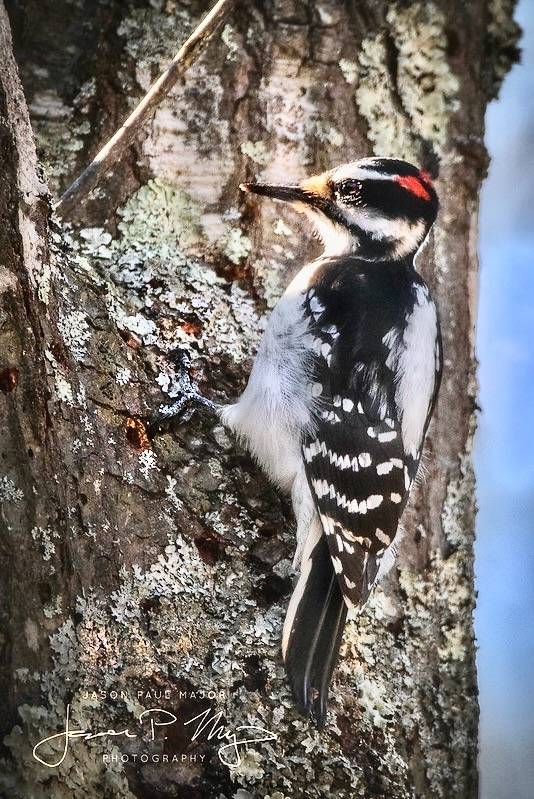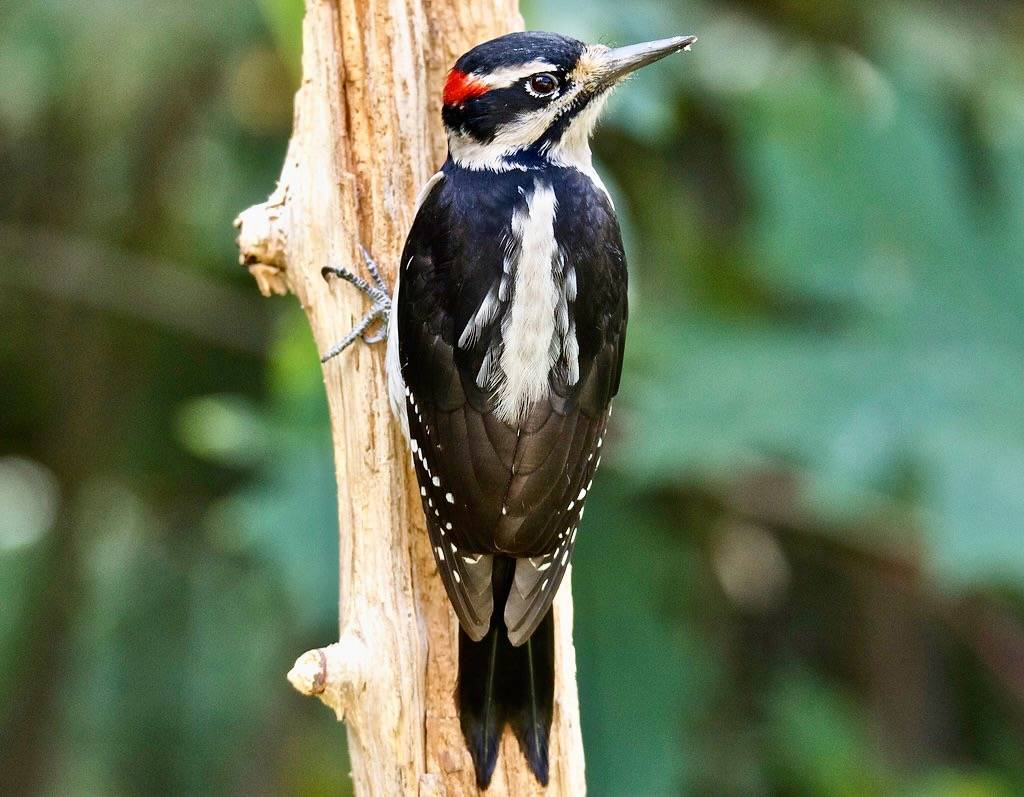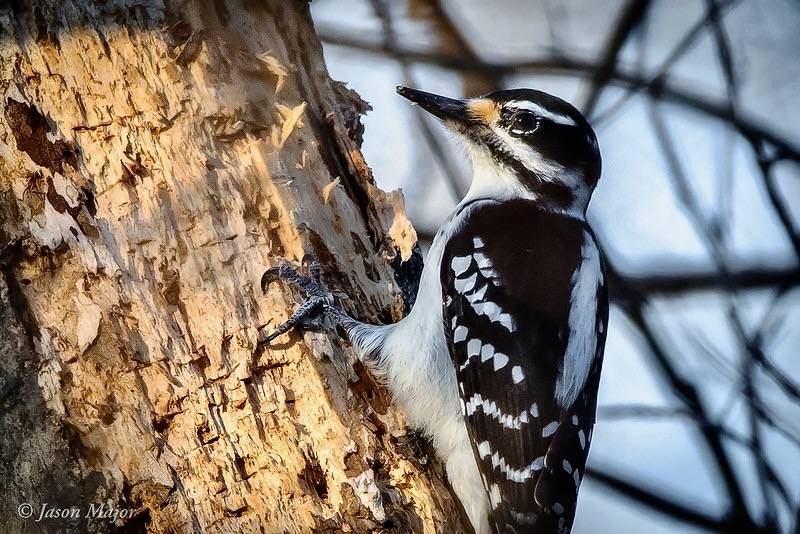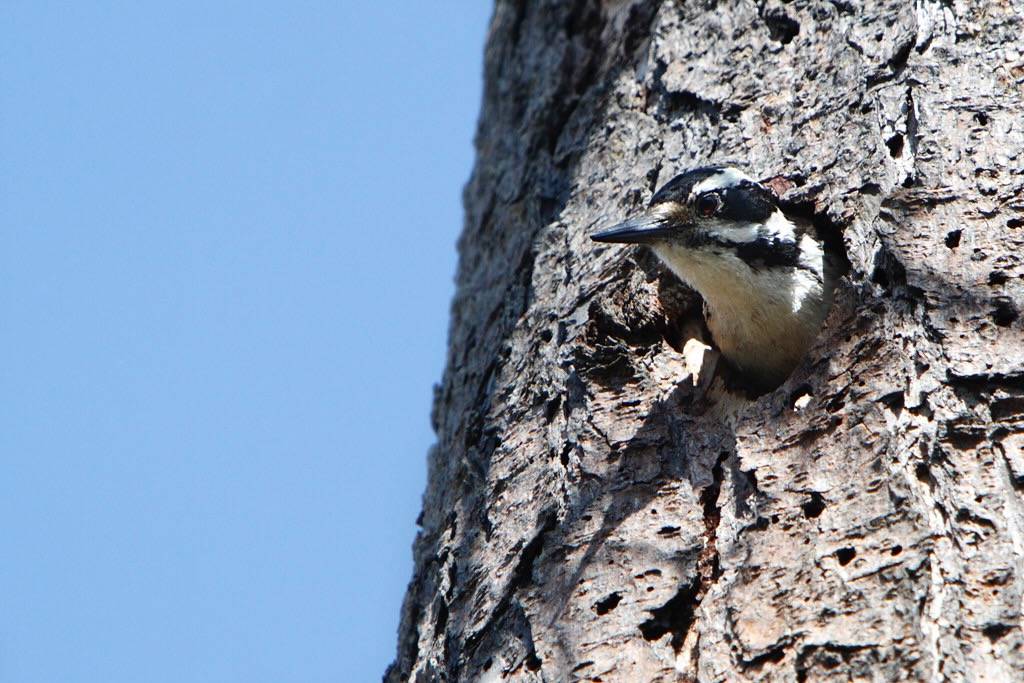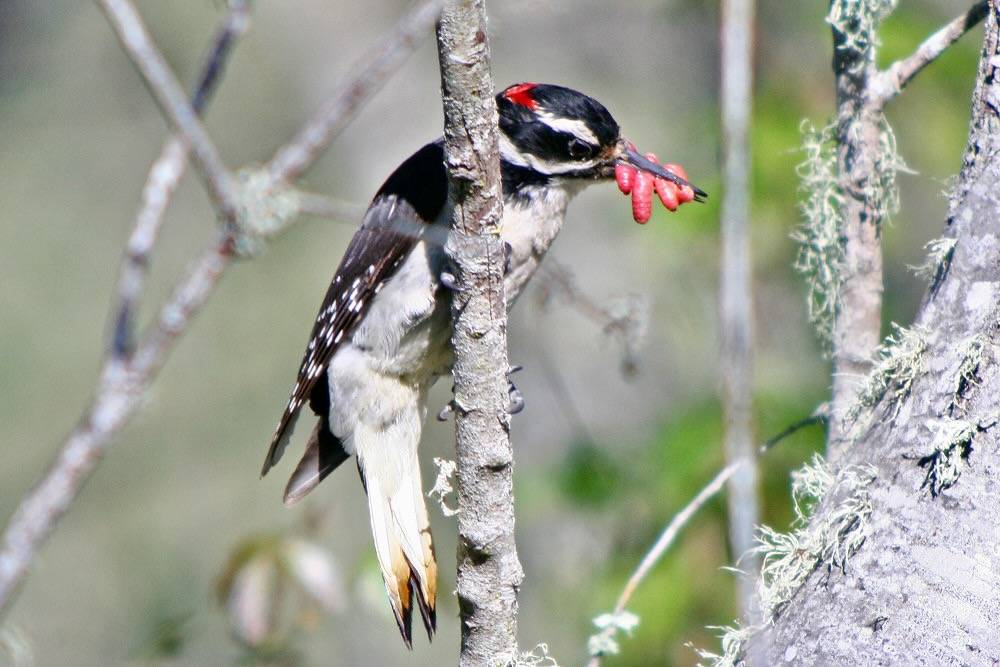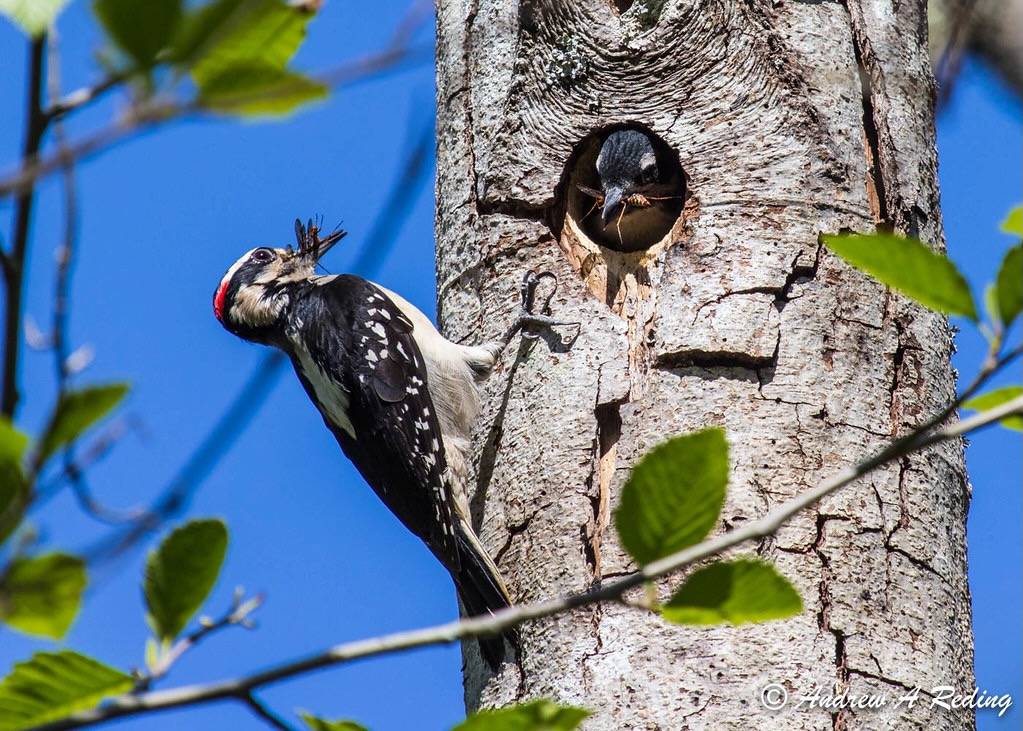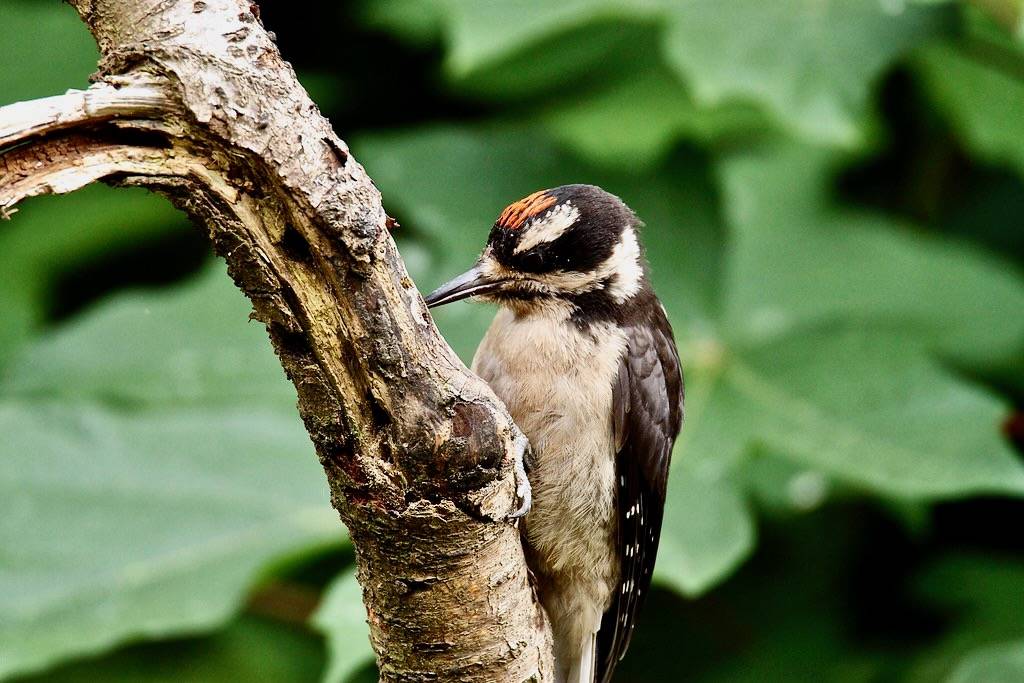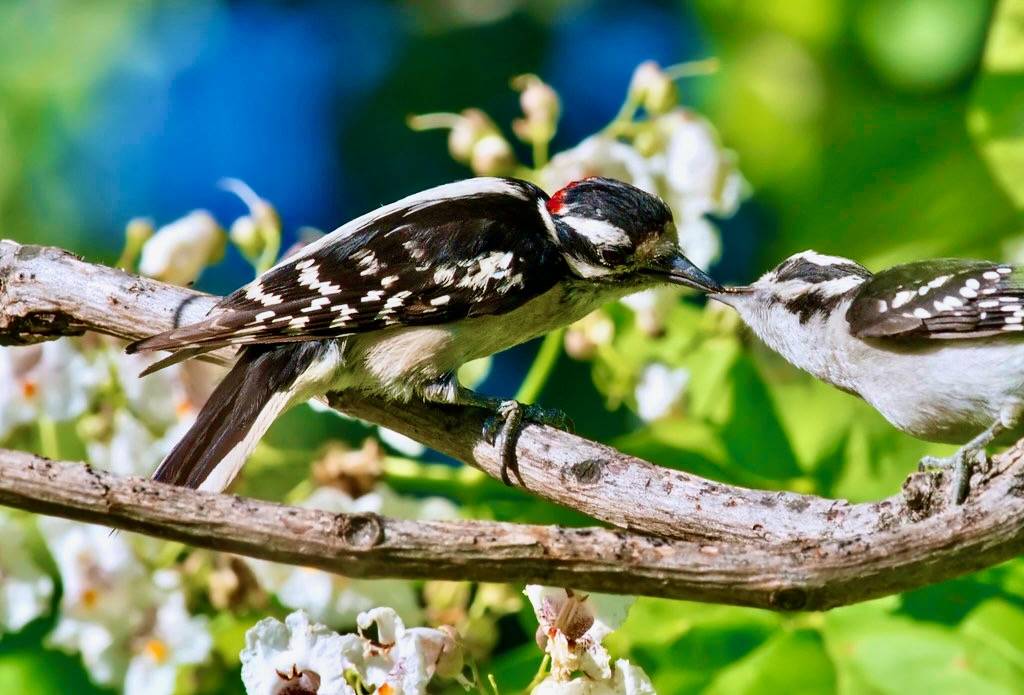Hairy Woodpecker
It is surprising to see the Hairy Woodpecker at Salter Grove because it normally inhabits forested areas with tall trees rather than sparse woodland. Since it is not migratory, sightings along the more heavily wooded sections of Audubon Trail were very likely of young birds prospecting for a suitable spot to call home.
At a distance, the robin-sized (9") Hairy Woodpecker can be mistaken for the sparrow-sized (6") Downy Woodpecker, which has been recorded year round at Salter Grove. The two species have nearly identical plumages including the red patch on the back of the head in adult males.
The two woodpecker species can be distinguished if their outer tail feathers can be clearly seen. Those of the Hairy Woodpecker are all white whereas those of the Downy are marked with varying amounts of black. If the tail feathers cannot be clearly seen, the following characteristics can help to distinguish between the two.
The Hairy Woodpecker has a stout bill that is about as long as its head is wide in profile. It tends to forage along tree trunks for insects beneath bark. In contrast, the bill of the Downy is thinner and only about one-third the width of the head in profile and favors small branches and twigs in search of insect prey.
Both the Hairy and Downy Woodpeckers occur throughout North America with the Hairy Woodpecker ranging further south. Whereas both species are found together in forest with tall trees, the Downy Woodpecker will more likely venture into small parks, woodlots and suburbia.
For more information:
https://www.allaboutbirds.org/guide/Hairy_Woodpecker
https://www.audubon.org/field-guide/bird/hairy-woodpecker
https://birdfeederhub.com/downy-vs-hairy-woodpecker/
https://www.thespruce.com/downy-or-hairy-woodpecker-387335
https://www.birdsandblooms.com/birding/bird-species/tell-difference-downy-hairy-woodpeckers/

